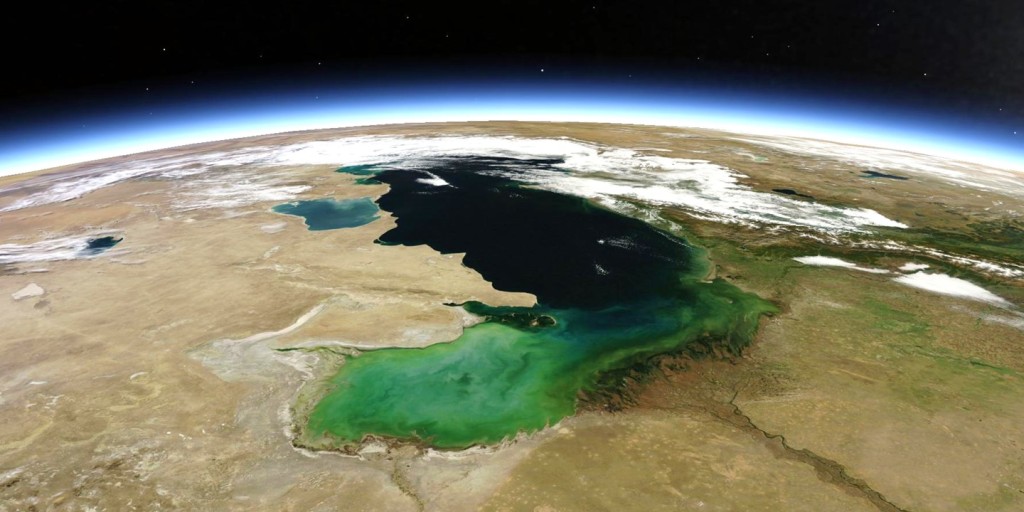Here’s a satellite view looking south across the Caspian Sea today, October 11, 2014, from the MODIS instrument on NASA’s Terra satellite (click for full size):

The Caspian Sea on October 11, 2014, as seen by the MODIS instrument on NASA’s Terra satellite, remapped into Google Earth.
The Caspian Sea is the world largest enclosed inland water body, and is bordered by Kazakhstan, Russia, Azerbaijan, Iran, and Turkmenistan. It is one-fourth as salty as the ocean. Also seen is the Volga River.

 Home/Blog
Home/Blog



